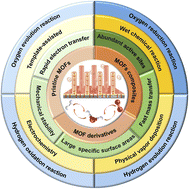Self-supporting metal–organic framework-based hydrogen and oxygen electrocatalysts
Abstract
Towards green production and efficient utilization of hydrogen, developing renewable clean energy technologies based on hydrogen and oxygen electrocatalysis, especially water electrolysis, zinc–air batteries, and fuel cells, is of vital significance. To promote their energy conversion efficiency, low-cost and high-efficiency electrocatalysts are highly desired to accelerate the sluggish kinetics of hydrogen and oxygen electrocatalytic reactions. The emergence of metal–organic frameworks (MOFs) provides new opportunities to obtain high-performance hydrogen and oxygen electrocatalysts with desired composition and structures. However, most of these MOF-based electrocatalysts are powders, resulting in limited active sites, blocked mass/charge transport, and insufficient stability. In this context, we present an up-to-date investigation of self-supporting MOF-based hydrogen and oxygen electrocatalysts with a focus on the synthesis strategy and application. Finally, some personal insights into the current challenges and potential solutions are presented, aiming at providing some guidance for the design and synthesis of advanced self-supporting MOF-based materials in hydrogen/oxygen-related energy technologies.

- This article is part of the themed collections: Journal of Materials Chemistry A Emerging Investigators and Journal of Materials Chemistry A Recent Review Articles


 Please wait while we load your content...
Please wait while we load your content...